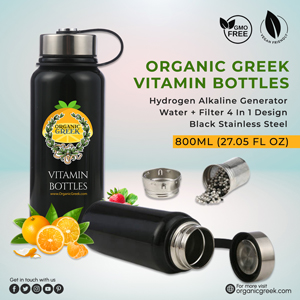 Broadband technology has revolutionized how we connect to the internet, providing faster and more reliable connections than traditional dial-up. DSL – Digital Subscriber Line, Fiber, and Cable are three popular broadband technologies. Each internet access type has its unique characteristics, advantages, and limitations. We will explore these broadband technologies to help you understand their differences and make an informed decision when choosing an internet service.
Broadband technology has revolutionized how we connect to the internet, providing faster and more reliable connections than traditional dial-up. DSL – Digital Subscriber Line, Fiber, and Cable are three popular broadband technologies. Each internet access type has its unique characteristics, advantages, and limitations. We will explore these broadband technologies to help you understand their differences and make an informed decision when choosing an internet service.
If you’re in the process of comparing NBN broadband plans, there are a few key aspects to look at. Firstly, you’ll want to look at the speed and data allowance each type of plan offers and the cost. Choosing a plan with enough data to meet your needs is essential – though not so much that you’re paying for more than you use. You should also consider any additional features that may be included, such as a home phone line or streaming services, like cable broadband. Ultimately, your best NBN broadband plan will depend on your unique needs and budget.
1. DSL – Digital Subscriber Line:
DSL is one of the earliest forms of broadband technology and is Australia’s most widely available option. DSL operates over existing copper wire telephone lines, allowing users to access the internet while still being able to use their telephone services. It’s better than dial-up, but NBN is superseding it. Here’s everything you need to know about DSL:
Speed:
DSL speeds vary based on the distance from the local Telstra exchange’s equipment. The proximity determines the swiftness of your connection. This equipment could even be located in the basement of your organization’s building for the best speeds. DSL typically offers download speeds ranging from 1 Mbps to 100 Mbps, with VDSL2 reaching download speeds of 250 Mbps at a 0.5 to 1 km distance.
Availability:
DSL is available in many Aussie regions, including rural areas. This makes DSL an excellent option for users who may not have access to other types of broadband. However, some phone lines could be more suitable due to bad wire quality or distance from telephone exchanges.
Cost:
DSL is generally more affordable than Fiber and Cable, making it a cost-effective choice for users on a budget. ADSL – Asymmetric DSL – for example, is around $80 a month.
Advantages:
– Broad availability, especially in rural and suburban Australia.
– Affordable pricing for basic internet needs.
– Ability to use the telephone line simultaneously for voice calls.
Limitations:
– Speed heavily depends on the distance from the provider’s central office.
– Upload speeds are typically slower than download speeds.
– Slower performance during peak usage times.
2. Fiber:
Fiber-optic technology uses thin strands of glass or plastic to transfer data as pulses of light. It’s not widely available yet, though the NBN plan aims to bring Fiber to most of Australia. It has outstanding speed and reliability, making it a favorite for high-bandwidth uses. Here are the key features of Fiber:
Speed:
Fiber offers astonishing internet speeds, ranging from 100 Mbps to 1 Gbps or even faster. It provides symmetrical upload and download speeds, making it ideal for video conferencing and cloud computing.
Reliability:
Fiber is exceptionally reliable and less susceptible to signal degradation over long distances.
Advantages:
– Superfast and symmetrical upload and download speeds.
– Even performance, even during peak hours.
– Fit for heavy internet users, gamers, and businesses.
Limitations:
– Availability is limited, primarily in urban areas and may not be available in rural Australia.
– Pricier installation and monthly costs compared with DSL and Cable.
3. Cable:
Cable broadband utilizes coaxial cables, the same medium employed for delivering cable television, to furnish internet connectivity. Cable internet is available anywhere cable TV is and has been popular for many years. Here are the key features of cable:
Speed:
Cable offers fair download speeds, ranging from 25 Mbps to 1000 Mbps or more in some areas.
Availability:
Cable is widely available in urban and suburban Aussie areas, with coverage growing in some rural regions.
Cost:
The price is the same as cable, though you’ll have to pay to install it if you don’t already have one.
Advantages:
– Faster download speeds than DSL.
– Can bundle internet and cable TV from the same provider.
– Good for users who need moderate to high-speed internet.
Limitations:
– Upload speeds are slower than download speeds.
– Performance impacted by users in the local area sharing the same cable line.
– Connection may slow during peak usage times.
Now you know the differences between DSL, Fiber, and Cable broadband technologies, you can choose the best internet service that aligns with your needs and location. If you prioritize speed and reliability, Fiber is great if it’s available where you live. At the same time, DSL could be a suitable option if you’re on a budget but still need good speed – especially in a rural area. Cable balances speed and affordability and is a decent choice in urban and suburban regions.
Celebrity WEB Update— Premier Jewelry designer and manufacturer fashion house ParisJewelry.com has started manufacturing a new custom line of celebrity jewelry designs with 30% Off and Free Shipping. Replenish Your Body- Refilter Your Health with OrganicGreek.com Vitamin Bottles, Vitamins and Herbs. Become a WebFans Creator and Influencer.

